These odd looking birds love to hang out at SC golf courses. Here are 5 things to know about them
When driving along South Carolina’s coastal waterways, wetlands and estuaries, you may find yourself spotting a small, strange-looking bird with a long, curved beak.
Those little birds are white ibis.
White ibis are primarily year-round residents in the Carolinas that may also be found around golf courses and near lagoons.
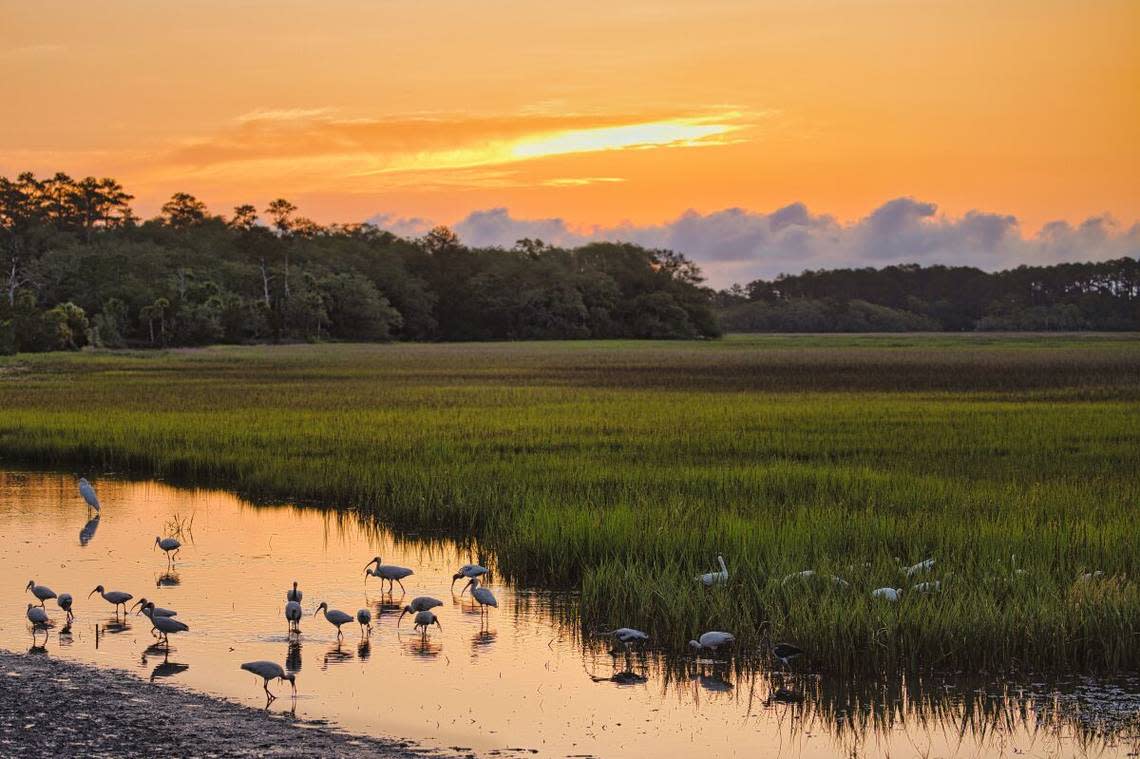
If they do happen to migrate south, they tend to go to Florida, Cuba or northern South America (Columbia), said Kay Grinnell, President of the Hilton Head Audubon.
What do they look like?
As adults, they are medium-sized, striking birds that are all white in coloration with black wing tips, which are only visible during flight, with orange/red long decurved bills and facial skin and blue eyes.

As juveniles, these birds are different in color. Juveniles typically appear from fall through winter and are brown above and white below, sport a streaky brown neck., with orange-pink bills and legs. In addition, immatures, which are the first summer birds, are a splotchy brown and white above as they molt into their adult plumage, according to All About Birds.
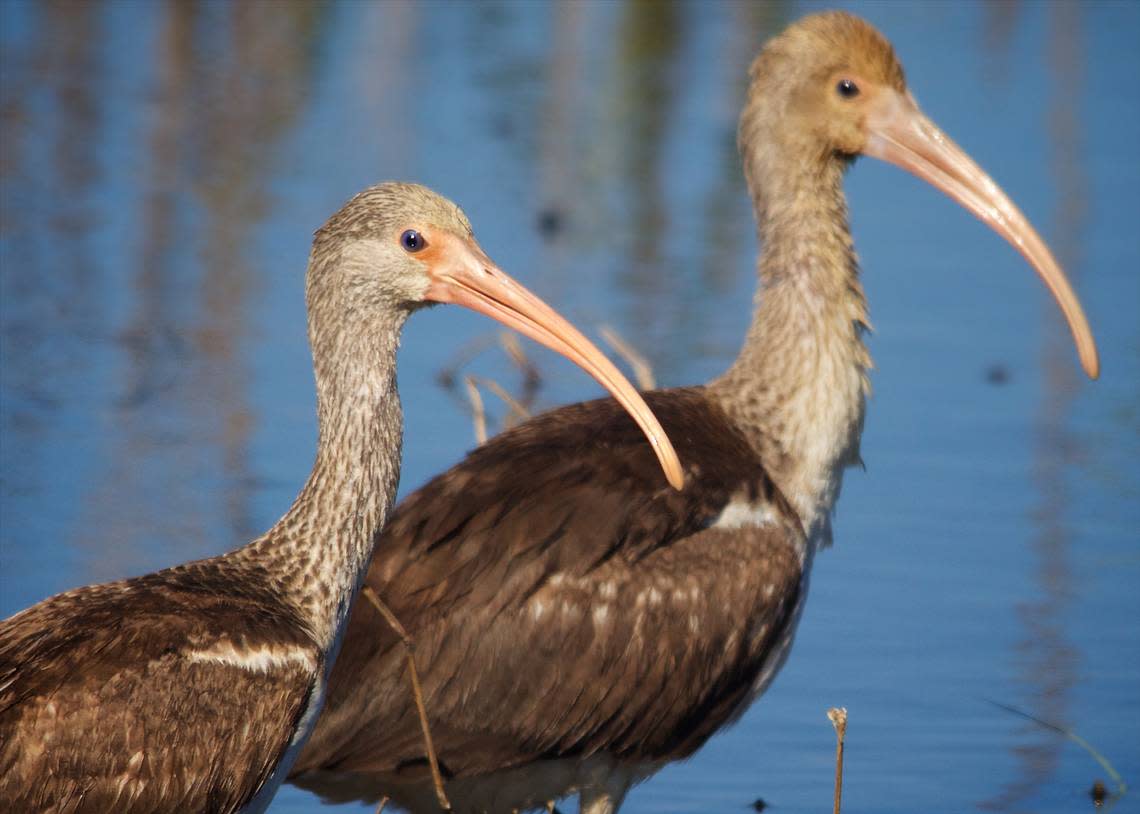
What do they eat?
White Ibis feed in shallow water in groups and their diet consists mainly of crustaceans, which include snails and small crabs such as fiddlers and crawfish. Their long, narrow, curved bills are perfectly shaped to put down into crab or snail burrows to find their prey. White ibis will also dine on insects, frogs, marine worms, snakes and small fish.

To feed, ibis will insert their bills into soft muddy terrain and feel for prey. When they do, they will pinch the critter between their bill and pull it up to be swallowed and eaten.
Where are they found?
White Ibis can be found year-round along the southeast coast up to North Carolina, most of Florida and the Gulf Coast as well as the southern coasts of the Baja peninsula, Grinnell said.
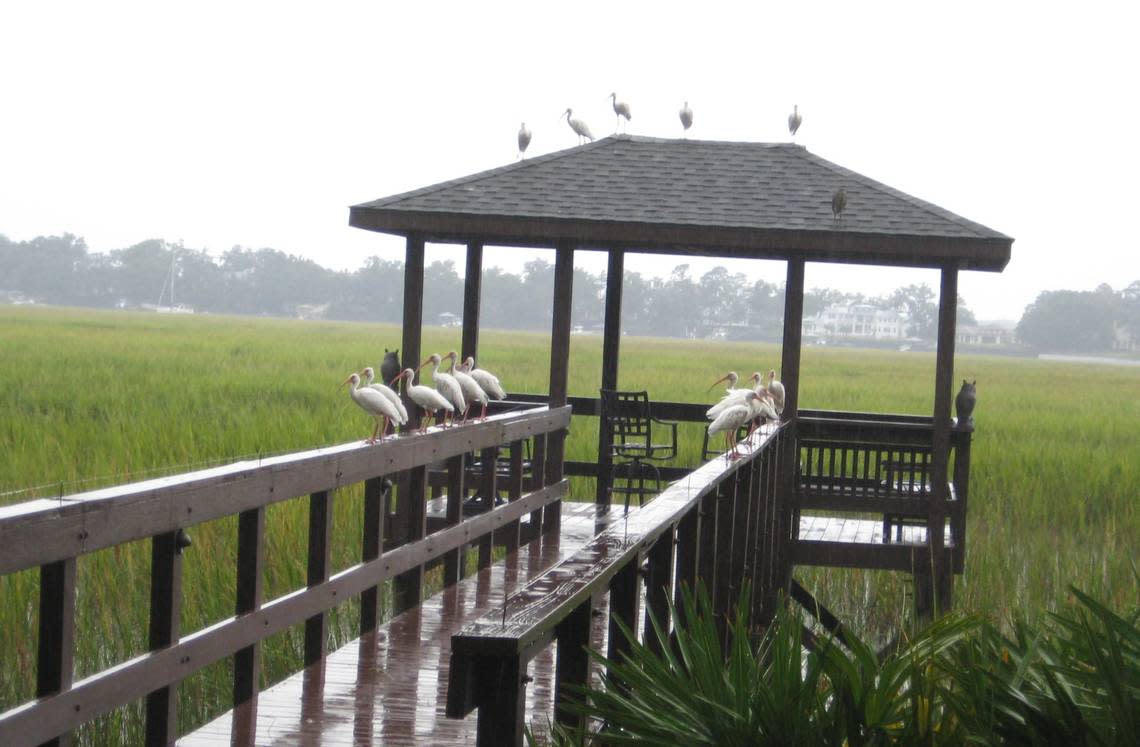
Ibis birds are colony nesters in mid to late summer and prefer to nest in trees on an island.
As for the Beaufort County area of the South Carolina coast, Pinckney Island’s aptly named Ibis Pond has nesting ibis in July, August and sometimes into September, Grinnell said.
These birds do prefer to change their nesting locations each year; thus making it unpredictable but not impossible to locate their new nesting site.
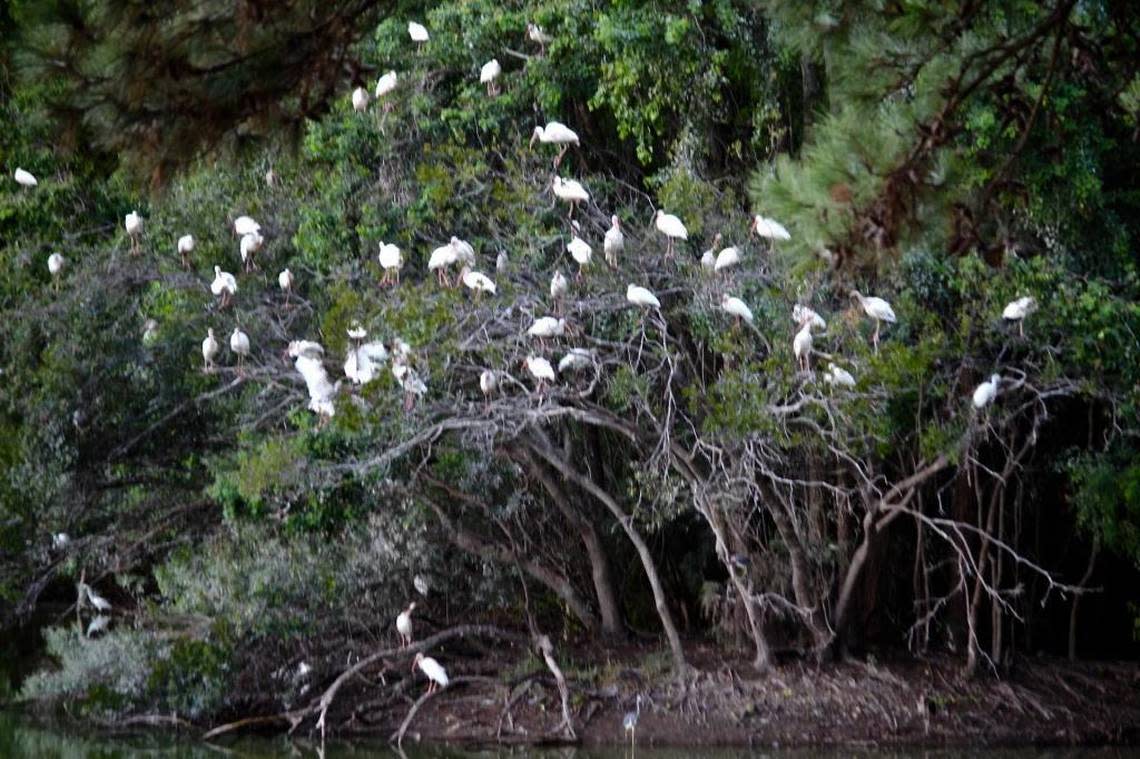
Nest sites usually are constructed 2-15 feet above the ground or water, sometimes higher or occasionally on the ground. As for the nests themselves, both males and females participate in the nest’s construction. Male ibis bring the sticks and the female builds the nest, according to the National Audubon Society.
What are their breeding behaviors like?
First breeds for these social birds begin at 2 years old. Afterward, a female Ibis will lay approximately two to three eggs, occasionally up to five, which are pale blue-green to white and are adorned with brown specks. After the eggs have been laid, both males and females cover “nest duty,” where the eggs will incubate for an average of 21 days, continued the National Audubon Society.
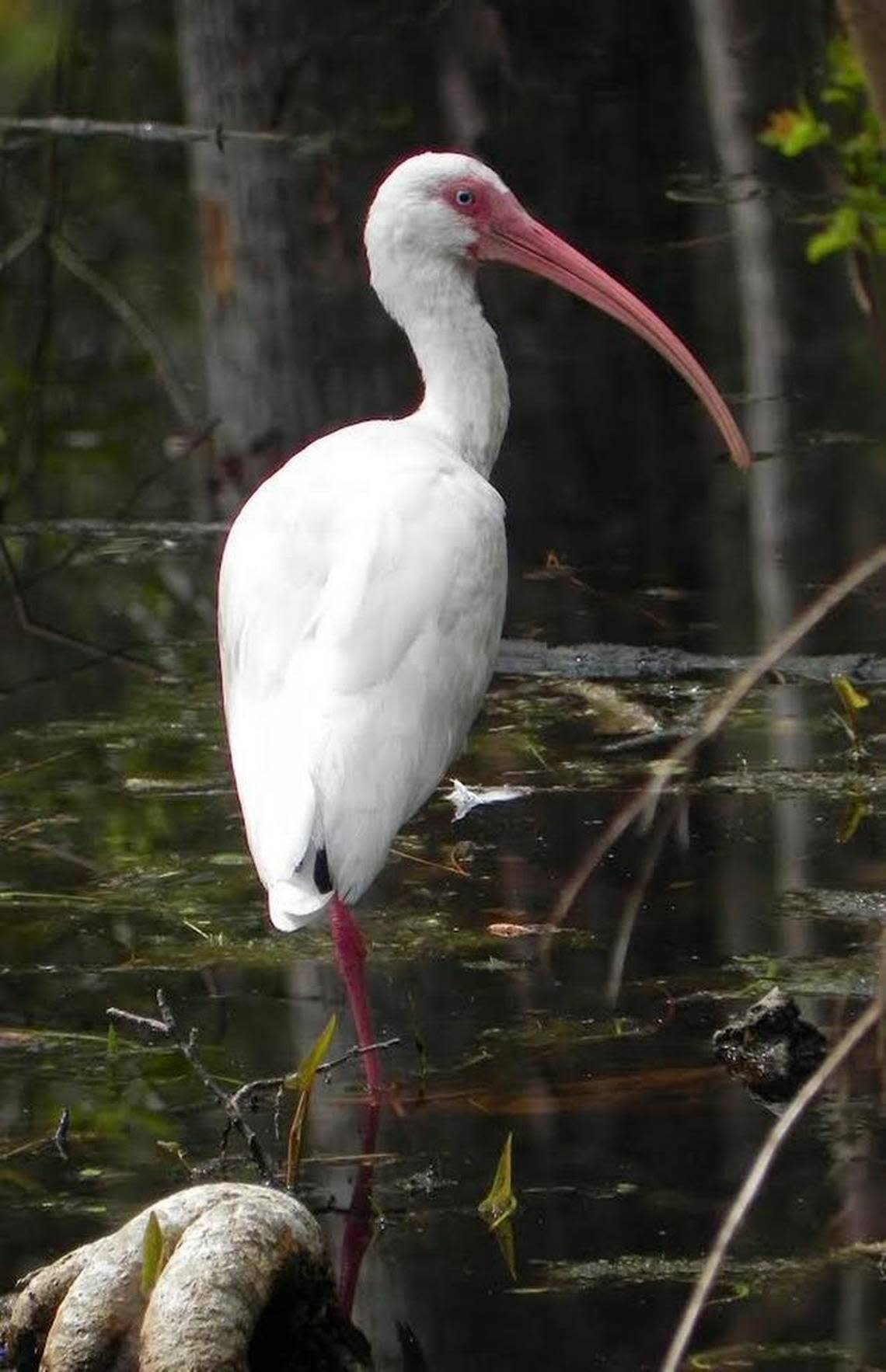
Once hatched, the Ibis nestlings are unable to hold their head up, and have closed eyes but will develop quickly. The nestlings will be ready to flap their wings and attempt short flights at four to five weeks and leave the nest at six to seven weeks to forage with adults, Grinnell said.
Other Interesting Facts
When a White ibis nestling hatches, their bills are initially straight and will not begin to curve until they are around 14 days old.
Female White ibis birds are slightly smaller than their male counterparts and have smaller bills and shorter wings, said All About Birds.
Male ibis are highly territorial and protective of their nest and female and will rarely leave his paired female alone.
